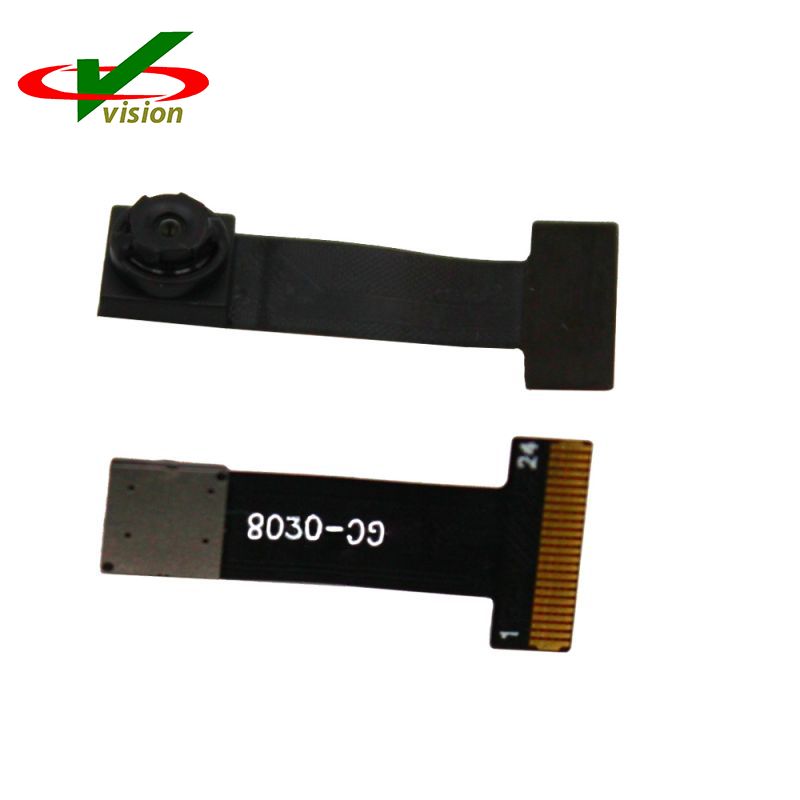0.3 Mega Pixel Camera Module is a type of camera module that can capture images with a resolution of 640x480 pixels, which is sufficient for basic image and video capturing. Regardless of its relatively low resolution, it has been widely used in various fields, such as surveillance systems, robots, drones, and mobile devices. Compared to higher pixel camera modules, the advantage of 0.3 Mega Pixel Camera Module is its size and weight, which make it suitable for small-sized products.

What factors should be considered when selecting a 0.3 Mega Pixel Camera Module?
The first factor that should be considered when selecting a 0.3 Mega Pixel Camera Module is the intended use. If the camera module is intended to be used on a small-sized product, size and weight should be the primary consideration. On the other hand, if the camera module is intended to be used for professional purposes, image quality should be the primary consideration. Other factors, such as power consumption, operating temperature, and interface compatibility, should also be taken into account.
What are the applications of 0.3 Mega Pixel Camera Module?
0.3 Mega Pixel Camera Module can be used in various fields as mentioned earlier. For example, it can be used for surveillance systems to capture basic images and videos of the monitored area. In mobile devices, it can be used for video conferencing and basic photography. In robots and drones, it can be used for basic image capturing for navigation and obstacle avoidance.
What are the alternatives to 0.3 Mega Pixel Camera Module?
The alternatives to 0.3 Mega Pixel Camera Module are higher pixel camera modules, such as 1MP, 2MP, 5MP, and even higher. These camera modules can capture higher resolution images and videos, which is suitable for professional purposes such as photography, videography, and industrial inspections. However, they are generally larger and heavier than 0.3 Mega Pixel Camera Module, which makes them less suitable for small-sized products.
In conclusion, 0.3 Mega Pixel Camera Module is an important component in many products that require basic image and video capturing. When selecting a camera module, the intended use should be the primary consideration, and factors such as size, weight, image quality, power consumption, operating temperature, and interface compatibility should be taken into account.
Shenzhen V-Vision Technology Co., Ltd. is a leading supplier of camera modules, including 0.3 Mega Pixel Camera Module. We provide high-quality products at competitive prices, and our products are widely used in various fields. Visit our website at
https://www.vvision-tech.com for more information, or contact us at
vision@visiontcl.com to request a quote or ask any questions.
Research Papers:
1. T. Zhang, et al. (2019). "A novel method for detecting gas leakage sources using thermal imaging". Infrared Physics & Technology, vol. 97, pp. 38-46.
2. S. Park, et al. (2018). "Development of a low-cost thermal imaging system for agriculture using smartphone camera". Computers and Electronics in Agriculture, vol. 154, pp. 20-25.
3. H. Zhao, et al. (2017). "An autonomous mobile robot using active thermal imaging for object detection at day and night". Journal of Field Robotics, vol. 34, pp. 1192-1205.
4. Y. Liu, et al. (2016). "A novel real-time registration method for thermal and visible images based on gradient histogram-oriented gradients". Pattern Recognition, vol. 56, pp. 45-54.
5. X. Xu, et al. (2015). "Accurate 3D measurement for specular surface based on binocular stereo vision system and phase measuring deflectometry". Optics Express, vol. 23, pp. 14132-14143.
6. L. Lu, et al. (2014). "Design and implementation of a distributed thermal imaging system for forest fire detection". Computers and Electronics in Agriculture, vol. 100, pp. 85-90.
7. Q. Yuan, et al. (2013). "Automatic inspection of surface defects in hot rolled steel strips using infrared thermography". Journal of Materials Processing Technology, vol. 213, pp. 97-105.
8. M. Li, et al. (2012). "High-precision temperature measurement for metallic surfaces using low-cost IR camera". Sensors and Actuators A: Physical, vol. 178, pp. 159-165.
9. J. Wang, et al. (2011). "Robust real-time face detection using thermal imaging", Pattern Recognition Letters , vol. 32, pp. 1584-1589.
10. S. Wang, et al. (2010). "A high-resolution thermal imaging system for small animal imaging applications". IEEE Transactions on Medical Imaging, vol. 29, pp. 490-498.


